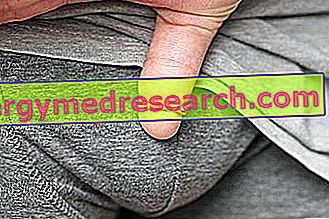By Dr. Luca Franzon
The fitness sector is evolving considerably, trying to cover the most varied needs that users require. In the hope that the medical sector, too, will notice how the gym can be useful for preventing and helping to treat various diseases. Several years will have to pass, before the Fitness enters the culture of each of us, but in the meantime it is right to make people understand that the gym is not only hypermuscular boys and a place where it runs doping in rivers, but a place where anyone can find the resolution to your problem.

When the doctor measures the arterial pressure, he records and evaluates two numerical values: the MAXIMUM or systolic pressure and the MINIMUM or diastolic pressure. The two blood pressure values are measured in millimeters of mercury (mmHg), and, under normal conditions, they should result in a form like '120/80', where 120 represents the maximum value and 80 is the minimum value of arterial pressure during the cycle heart.
Blood pressure values below 140 mmHg systolic and 90 mmHg diastolic are considered normal. At a time when the doctor finds values higher than the two limits mentioned, finding them several times in a certain interval of time, then the patient is considered hypertensive.
Arterial hypertension is an extremely widespread pathological form throughout the civilized world. There are various forms of it, due to different causes such as kidney problems, endocrine problems, metabolic problems etc.
In the event that it is not possible to discover a precise and eliminable cause that determines hypertension, it is called essential hypertension. Blood pressure varies continuously during the day: physical efforts, emotions, small pains, worries, hot or cold, cigarette smoke, eating, carrying out precise physiological functions, particular moments of life (menopause) are enough to cause a rapid increase
Because of these reasons, it is important to measure it in so-called 'basal' conditions: one must try to be quiet, not have smoked for at least an hour, be rested, not have a full bladder, sit comfortably or lie down with the arm used for relaxed measurement.
Once the pathological phenomenon is ascertained, it will be up to the doctor to undergo a drug therapy based on various data such as: sex, other diseases present in the subject, possible damage to organs, etc.
There are various classes of antihypertensive drugs, each with its merits and side effects. A patient may not get significant benefits with the use of a drug of a certain class, so it may sometimes be necessary to change it or use more medicines to achieve the desired result. Drug therapy may have, as mentioned, undesirable side effects: it is therefore necessary to consult your doctor if you observe changes in your psychophysical state or the onset of new disorders; however, it is necessary, except for serious reasons, to continue the therapy until the doctor decides to suspend it or change it.
It is important to remember that with medical therapy high blood pressure DOES NOT HEAL, as a cold or a trivial infection could do: blood pressure is lowered until the drug is taken, but returns to the previous values if the therapy is suspended. Therefore, therapy should never be interrupted on its own; the drug should be taken at regular times and in the right dose; try to remember the name of the drug or drugs used to inform other doctors, if necessary, of the therapy in progress.
Once the appropriate pharmacological treatment is found, able to stabilize blood pressure values in acceptable and non-dangerous ranges, it is also important to correct one's lifestyle .
There are various factors that, associated with high blood pressure, increase the risk of experiencing serious cardiovascular diseases such as stroke, myocardial infarction, angina pectoris. On some of these factors one cannot intervene (for example, familiarity, male sex, a more advanced age, etc.). On others, however, a change of habits can be of incredible practical value.
The hypertensive patient should stop smoking. Those who are overweight should start an adequate low-calorie diet to regain their weight. We need to reduce the ingestion of table salt and foods that contain high amounts of sodium: it is better to use special low-sodium products. Try to become less competitive with yourself and others, looking for ways to relax by eliminating the stress that is a major cause of hypertension
Another way to lower and regulate blood pressure is to do an aerobic sport. And here comes fitness as "therapy". The hypertensive patient should attend a Fitness Center at least four times a week, even better if the presence was daily. The duration of the session should range from 30 to 60 minutes, with an intensity of 40/60% of the cardiac range. The use of the heart rate monitor is very important. Sub-maximal and maximal intensity exercises are not recommended. Isometric contractions are not recommended. Work with weights will be performed with light loads and a medium-high number of repetitions, performed dynamically to avoid isometric contractions.
Hypertension must ensure that your illness does not become a nightmare, also because it would only be a cause of amplifying the disease, once a good control of blood pressure is obtained, a measurement every 7-10 days is more than enough. If possible, you should have a well-functioning sphygmomanometer at home, to compare periodically with that of your doctor, so as to control the pressure in a quiet environment and whenever the need arises. In case of significant deviations of the pressure values from those normally found, it is advisable to consult the doctor immediately to take the necessary measures.
IT IS VERY IMPORTANT, do not underestimate symptoms such as chest pains, especially if they arise during physical effort, or arm pain, or unexplained wheezing, or palpitations, or dizziness: in these cases, it is best to have the doctor check you as soon as possible.
Hypertension and sport



